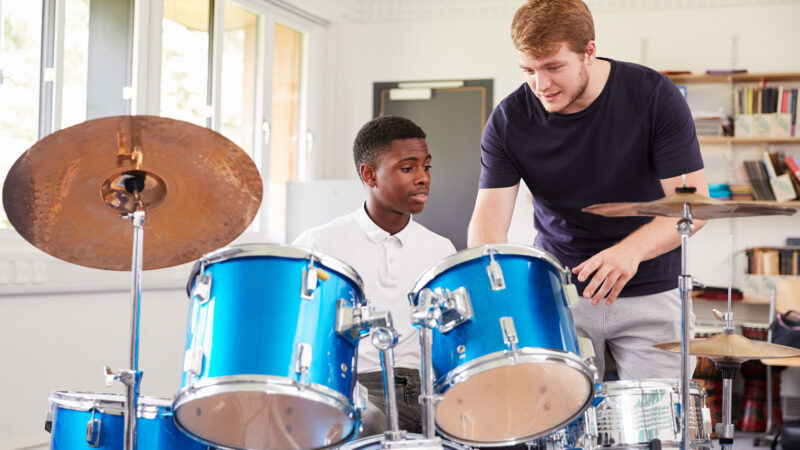From Boredom to Engagement: How a Gamification Platform Enhances Classroom Dynamics

Are you tired of hearing the sound of crickets in your classroom? Are you searching for a way to transform bored students into enthusiastic learners? Look no further! In today’s blog post, we will explore the exciting world of gamification and how it can revolutionise your classroom dynamics. By turning education into an interactive game, we’ll show you how to capture and sustain your students’ attention like never before. Get ready to say goodbye to yawns and hello to engaged minds as we dive into the fascinating topic of using a gamification platform to enhance classroom dynamics!
Introduction to Gamification Platforms
When it comes to enhancing classroom dynamics, gamification platforms provide educators with a unique and engaging way to do so. By incorporating elements of game-play into the learning process, these platforms can help to increase student motivation and engagement. In addition, gamification platforms can also promote collaboration among students and allow educators to track student progress.
There are a variety of different gamification platforms available, each with its own set of features and benefits. When choosing a gamification platform for your classroom, it is important to consider your specific needs and goals. Some factors you may want to keep in mind include the age and abilities of your students, the subject matter you will be covering, and the level of interaction you are looking for.
Here are just a few of the many different gamification platforms available:
Classcraft: Classcraft is a free online game that helps teachers to create an engaging and supportive learning environment in their classrooms. Classcraft incorporates elements of role-playing games, social media, and achievement tracking into the learning process. Students are able to work together to complete quests and earn rewards as they progress through the game.
Kahoot!: Kahoot! is a free game-based learning platform that makes it easy for teachers to create fun and interactive quizzes for their students. Quizzes can be tailored to any subject matter and students can compete against each other in real-time to see who knows the most about the topic at hand. Kahoot!
Understanding the Benefits of Gamification in Education
When it comes to Gamification in Education, there are a few key benefits that can help to improve classroom dynamics. For one, Gamification can help to increase engagement among students. This is because when students are given the opportunity to earn rewards for completing tasks or demonstrating knowledge, they are more likely to be motivated to participate. Additionally, Gamification can also help to promote collaboration among students. When students are working together towards a common goal, they are more likely to communicate and cooperate with one another. Gamification can also help to create a more fun and interactive learning environment. When students are enjoying themselves, they are more likely to retain information and be engaged in the material.
How Does a Gamification Platform Work?
When it comes to gamification in the classroom, there are a few key elements that make up a successful platform. The first is the ability to track and measure progress. This data can be used to identify patterns and trends, which can then be used to improve the overall experience for students. Secondly, a gamification platform should offer a variety of engaging content that is updated on a regular basis. This content should be designed to challenge and motivate students of all levels. A gamification platform should provide an easy way for teachers to monitor student progress and give feedback.
Implementing a gamified learning environment
When it comes to gamification in the classroom, there are a few key things to keep in mind. First and foremost, it’s important to create an environment that is conducive to learning. This means making sure that the content is engaging and that the students have a clear understanding of what they need to do in order to succeed.
Once you have a good grasp on the content, it’s time to start thinking about how you can gamify the learning process. There are a few different ways to do this, but one of the most effective methods is to use a platform like Gamify. This tool allows you to easily create games and activities that are specifically designed to promote engagement and learning.
Not only does Gamify make it easy to create games, but it also provides a number of pre-made games that you can use in your classroom. These games are designed to help students learn specific concepts and skills, so they’re perfect for use in a gamified learning environment.
If you’re not sure where to start,Gamify offers a number of tutorials and resources that can help you get started with creating your own games. Once you have a few games under your belt, you’ll be surprised at how much more engaged your students will be in the learning process.
Examples of Effective Gamified Learning Experiences
There are many ways to gamify learning experiences, but some examples of effective gamified learning experiences include:
1. Using game-based learning to teach new concepts: Gamified learning can be used to introduce new topics or reinforce existing ones. For example, a teacher could create a game in which students must answer questions about a new topic in order to progress. This would require students to actively engage with the material in order to learn it.
2. Encouraging collaboration through games: Games can also be used to encourage collaboration among students. For example, a teacher could create a game in which students must work together to solve puzzles or reach goals. This would promote cooperative learning and help students develop teamwork skills.
3. Enhancing problem-solving through gaming: Gamification can also be used to help students improve their problem-solving skills. For example, a teacher could create a game in which students must find creative solutions to challenges. This would require students to think critically and outside the box, leading to improved problem-solving skills.
4. Motivating students with rewards: Gamification can be used as a motivator for student engagement. For example, a teacher could create a system in which students earn points for completing tasks or meeting goals.
Challenges and Opportunities with Gamification Platforms
Gamification platforms have the potential to engage students in learning by turning boring tasks into fun and challenging activities. However, there are some challenges and opportunities that need to be considered when using these platforms in the classroom.
One challenge is that gamification platforms can be distracting for some students. If not used properly, they can become a source of entertainment rather than a tool for learning. Another challenge is that gamification platforms can create a sense of competition among students which may not be conducive to a healthy learning environment. It is important to consider these challenges when designing games and activities for the classroom.
There are also some great opportunities that come with using gamification platforms in the classroom. These platforms can help students learn new skills and knowledge in an engaging and fun way. They can also motivate students to participate in class and work harder to achieve their goals. When used effectively, gamification platforms can enhance classroom dynamics and improve student learning outcomes.
Conclusion
Gamification is becoming an increasingly accepted and popular way of engaging students in the classroom. By utilising a gamified platform, teachers can create a learning atmosphere that encourages collaboration, competition, and innovation. With the right implementation strategy and guidance from school leaders, educators have the potential to transform their classrooms into vibrant learning environments where both teachers and students are inspired to learn. Ultimately, it is up to our educators to ensure that such technology-driven tools are used effectively so as to enhance student engagement and improve overall academic performance.




